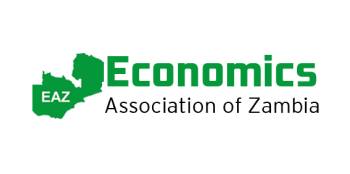EAZ Endorses Bank of Zambia’s Decision to Maintain Monetary Policy Rate at 13.5%
The Economics Association of Zambia (EAZ) has expressed support for the Bank of Zambia’s decision to keep the Monetary Policy Rate (MPR) at 13.5%, following the Monetary Policy Committee (MPC) meeting held from August 12 to 13, 2024.
This decision reflects a cautious approach to managing inflation while promoting economic stability and growth.
In a detailed statement, the EAZ highlighted the complex economic environment characterized by elevated inflation, external shocks such as drought, and the need for economic recovery.
While inflation remains above the targeted 6-8% range, the EAZ noted that the Bank of Zambia’s decision to maintain the current rate is justified, given that inflationary pressures are primarily driven by external factors, including global commodity price fluctuations and adverse weather conditions affecting agricultural output.
“The Bank’s decision to pause further tightening is a prudent response, especially when inflation is influenced more by supply-side factors,” said Mbanji Milambo, EAZ Vice President. “Aggressive tightening could hinder economic growth without effectively addressing these external pressures.”
The EAZ also acknowledged the impact of previous policy actions, such as increases in the policy rate and statutory reserve ratio, which have contributed to easing demand-side pressures. The association commended the Bank of Zambia’s recent reforms in the foreign exchange market, which have helped stabilize the exchange rate and support inflation control.
Regarding economic growth, the EAZ emphasized the importance of considering the impact of the ongoing drought on various sectors, particularly agriculture and energy.
The association believes that maintaining the current rate will provide room for the economy to recover as conditions improve, helping to avoid exacerbating economic downturns in drought-affected areas.
The EAZ also underscored the significance of financial system stability, noting that higher interest rates could increase the burden on borrowers and potentially strain financial institutions. By keeping the MPR at 13.5%, the Bank of Zambia aims to mitigate these risks and ensure the financial sector remains resilient.
Looking ahead, the EAZ stressed the importance of continued fiscal consolidation and structural reforms to complement monetary policy. The successful implementation of these measures, particularly in areas such as external debt restructuring and sectoral reforms, is deemed critical for reducing inflationary pressures and promoting sustainable economic growth.
“The Bank’s decision is a balanced response to the current economic challenges,” Milambo added. “However, the success of this strategy will depend on the continued implementation of fiscal reforms and the resilience of the financial sector.”



